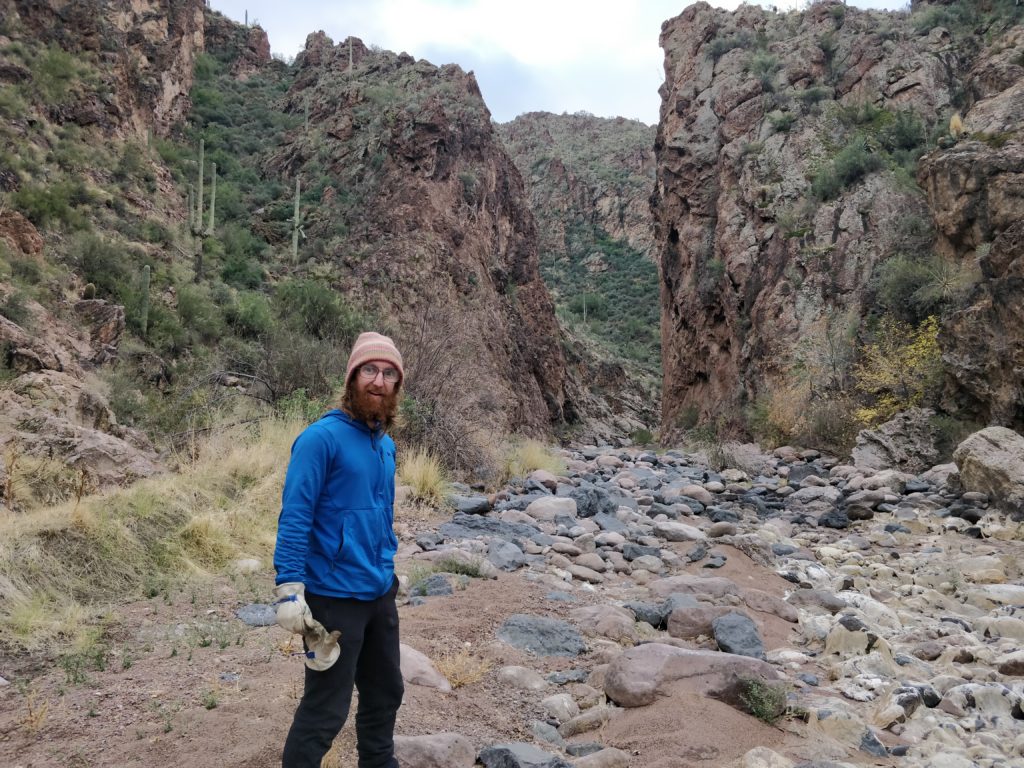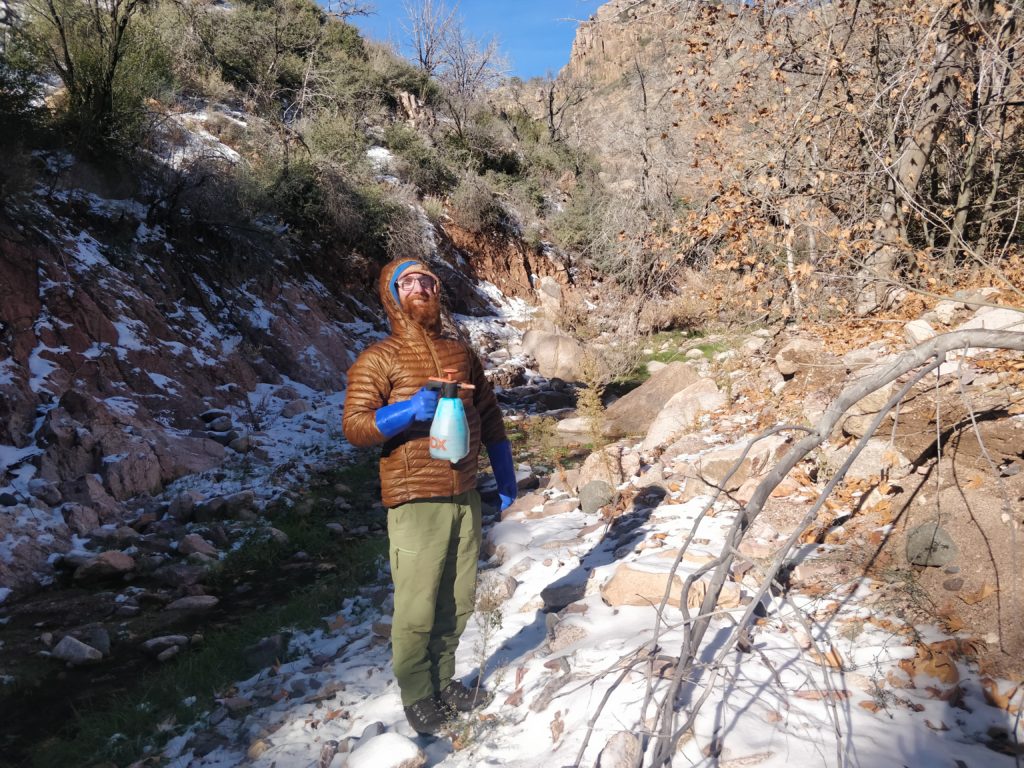
Written by Iman Chatila, Wild Stew Field Crew Member.
To start January off right, all of us on the Wild Stew Field Crew are back at it! After being cozy and enjoying indoor heating and plumbing over my holiday break, it was a bittersweet welcome to be feeling the elements of the winter conditions, including rain, freezing temperatures, and some snow! This hitch, my crew lead Sam and I went to four locations in the Superstition Wilderness to do invasive plant survey and treatment. We were looking for Malta star thistle, stinknet, fountain grass, giant reed, and our primary target: tamarisk.
First up was La Barge Creek in the southwest corner of the wilderness. Using the Field Maps app, we mapped several areas of tamarisk, stinknet, and fountain grass. Armed with 1⁄2 gallon of herbicide and a hand saw, we realized the density of tamarisk at this location exceeded our ability to do a meaningful treatment at this site. Nevertheless, the info we gathered will prove useful for land managers and planning future projects.

Next, we drove a short way down the highway to Tortilla Flat to do some more scouting. We followed a creek bed for a half mile until coming to a cliff with a dropoff into some murky water. Due to time constraints we decided to move on, making a stop for the night near Arnett Creek to say to one of Wild Arizona’s other crews. We socialized, ate delicious stew made by Dexter, and then drove off to Coffee Flat the next morning.
After driving up a steep dirt road, we backpacked 4 miles into Randolph Canyon, carrying a heavy load including two days of drinking water and my heavy winter sleeping bag. This location was our main quest. We treated many clusters of tamarisk, cutting it down to its stump and spraying it with herbicide. Our trusty hand saw ate many fistfuls of dirt, becoming dull and requiring more effort to use, but nonetheless it persisted. After using the last of our herbicide, it was time to hike out. There was rain in the forecast, so we put on our rain gear. This was going to be an ordinary hike out: just a little bit wet. Or so I thought! It then proceeded to snow three inches, drenching my pack and my boots, which made the journey a wet, cold slog. It was a beautiful thing to see the truck waiting at the trailhead.
Our final location was Campaign Creek. After an initial half day of scouting up the Reavis Gap Trail, we still had not found any tamarisk. The next day we were expecting not to find much either. The elusive tamarisk sat right beneath our feet, however, in the form of small saplings. Eventually I noticed it, and for the rest of the day we walked slowly, scouring the drainage for thin, wispy tamarisk trees to obliterate.


By the end of the hitch, we successfully surveyed and treated several watersheds in the Superstition Wilderness, furthering our conservation goals and setting us up for success in future projects!







